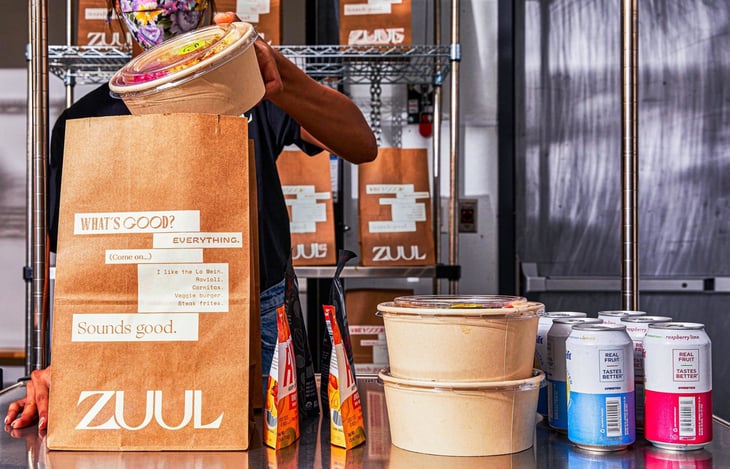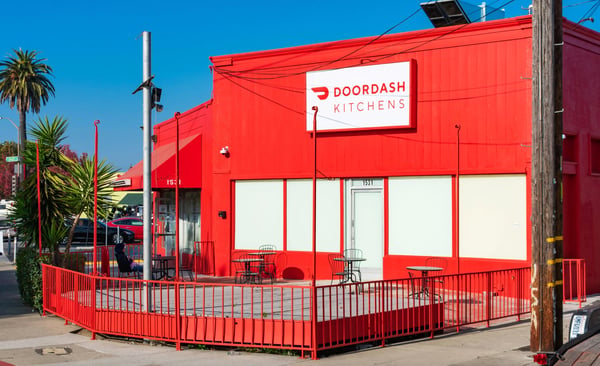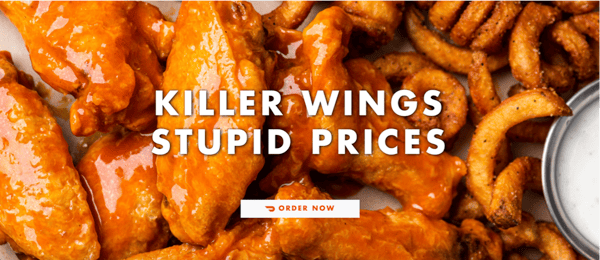The ghost kitchen movement: is it worth joining?
October 7, 2020

Ghost kitchens. They have a lot of buzz right now, and chances are, you’ve heard of the culinary concept. The idea is simple: restaurant brands rent or purchase off-premise kitchens with the purpose of focusing solely on food production for delivery. Once the new dining trend on the block, ghost kitchens gained quite a bit of traction in 2019 as we saw brands like Chick-fil-A and Wendy’s give the concept a test run. As ghost kitchens caught wind, many saw the emerging trend as intriguing; but to most, the thought of focusing solely on delivery was far-out and a bit ambitious. But then, the curve ball known as 2020 came along.
We’ll spare the rehashing of the details and just say this: it’s no secret that restrictions brought on by COVID-19 dealt a heavy hand to the restaurant industry. As the pandemic kept consumers at home, restaurant survival meant businesses had no choice but to shift their models to prioritize take-out and delivery services.
From there, it’s history. As consumer demand for delivery service continues to skyrocket, ghost kitchens–once the “hot new trend”–are now a must-consider for just about every existing restaurant brand. In fact, Euromonitor International projects the global ghost kitchen sector is on track to become a trillion dollar industry in the next decade. And that number, $1 trillion, is a big part of what leads us to believe that the ghost kitchen model is here to stay.
While at face value this concept can feel intimidating for restaurant brands; the truth is it very well may be the next best investment for a brand. Let’s dig in to what makes a ghost kitchen successful and explore what this means for brands and their consumers.
Reduced cost, increased value for all.
Even in the best of times, it’s difficult to make the traditional restaurant model work. The biggest pain point? Cost. On average, opening a restaurant can run around $275,000 while in comparison, it only takes about $20,000 to get a ghost kitchen up and running. The reason? There’s no need for dining rooms, front-of-house staff or prime real estate with astronomically high rent. Take Dallas-based, fan-favorite Wingstop for instance. Due to a 33.4% increase in growth after successfully pivoting to a delivery and take-out only model in April, they were well positioned to launch their ghost kitchen. Rather than finding another 1,750 square foot venue in a high-traffic area, Wingstop both expanded their footprint and grew their delivery operations from a 400 square foot space.
The sheer difference in cost and space needed tells us that launching a ghost kitchen really can be a bargain for brands. Plus, as it allows brands to focus less on upkeep and bills, operators can lower meal prices. This means their consumers get to enjoy the same mouthful of delicious food, just at a lower price. It’s a win-win.
Beyond reduced overhead costs, ghost kitchens may provide restaurateurs an opportunity to catch a financial break by stepping back from their increasingly rocky–and expensive–relationships with third-party delivery platforms like DoorDash, Grubhub and Uber Eats. Right now, the 10-30% delivery fees demanded by the apps overburdens a lot of brands, even the chains; but with the implementation of ghost kitchens, brands can hire (and support) gig economy workers to make deliveries for them instead.

Many get hung up on scaling back relationships with third-party aggregators because the marketing exposure a brand gains on the app can be invaluable. On the flip side, though, a smaller budget set aside for third-party apps can free up a brand’s marketing budget, allowing them to prioritize spending on other marketing channels like digital advertising.
Maximized efficiency = elevated quality.
A big point of tension between consumers and delivery from brick-and-mortar restaurants is that the food just doesn’t taste as good when it’s delivered. But now, with less time spent on operational tasks, restaurants have more time to focus on what they do best: cooking. In other words, through ghost kitchens, restaurants are uniquely positioned to deliver their consumers a higher quality meal. Not to mention, a streamlined focus on delivery-only orders also means brands are able to minimize the risk of ordering errors, slow delivery times and low quality meals leaving the kitchen. That’s a big help for brands catering to the on-demand consumer with an “I want it now and I want it right” mentality.
Thanks to ghost kitchens, we've also seen a steady decrease in food waste. A report from ReFED notes that 52 million tons of food waste is sent to landfills annually; but with a focus on delivery, restaurants are equipped to implement leaner menus and cut down on inventory, leading brands to effectively reduce the amount of food wasted. As consumers continue to scrutinize how their favorite brands are practicing sustainability, this is huge. If a restaurant can show consumers how they’re reducing waste through the implementation of ghost kitchens, they’re likely to increase the number of hungry folks walking through their digital doors.
Finally, with a more efficient, digitally focused operation, brands will be able to get a stronger grasp on what exactly their consumers are seeking. Through Point-of-Sale data, restaurants can better target their customers, while also picking up on ordering trends, giving brands the opportunity to specifically cater their menus to meet consumer wants. After all, what’s more attractive than a restaurant that goes the extra mile to feed you exactly what you want?
The door to opportunity is wide open.
Ghost kitchens are effectively changing the pattern of growth for restaurant brands. When brands successfully venture into the ghost kitchen sector, they’re equipped with more resources and opportunities for growth.
As the ghost kitchen concept continues to pick up pace, the establishment of ghost kitchen “networks” have become more and more common. Startups such as Reef Kitchens, CloudKitchens, and Zuul Kitchens simplify the process by helping restaurateurs navigate operations through shared kitchen space, proprietary technology and order fulfillment services. Joining a network has proven advantageous to brands building community awareness through co-marketing, direct communications and virtual events with other brands.
Additionally, key players are beginning to offer marketing resources to help brands get the word out about their new concept. For instance, brands that are customers of ingredient distributor US Foods have access to their Ghost Kitchen Playbook, a guide that not only helps brands launch their kitchens but also provides tips and resources for marketing their kitchen -- from leveraging social media platforms to optimizing search strategies.
Another popular trend falling out of ghost kitchens is the creation of virtual brands, or delivery-only concepts from well-know brands. Let’s talk about Brinker International, the parent company of Chili’s. They began testing a virtual-only brand called “It’s Just Wings” through a delivery partnership with DoorDash. And now? They’re on track to generate $150 million just this year. This projection is proof that adding a virtual concept can be highly incremental for your brand. A virtual brand provides an excellent opportunity to both expand your brand’s presence while reaching consumers in a new way by providing a product they’ve been hoping for, but may not have expected to see from your brand.
 It's Just Wings is a no frills virtual brand. They'll deliver delicious wings and that's it. No utensils, no fancy packing, no ads – all to keep prices low and stomachs happy.
It's Just Wings is a no frills virtual brand. They'll deliver delicious wings and that's it. No utensils, no fancy packing, no ads – all to keep prices low and stomachs happy.
So, what does the future hold?
As much as it pains us to say it, uncertainty around how COVID-19 will impact the long term remains. Right now, it’s looking like delivery services will only get more popular among consumers. One way or another, brands are going to have to find a way to keep up with that demand, and it appears expanding into the ghost kitchen arena might be one of the most economical and efficient ways to best serve the growing needs of your consumers.
Thinking about launching a ghost kitchen or recently launched one? Reach out today to find out how Slingshot can help you drive a connection between your consumers and your new, virtual endeavor.




